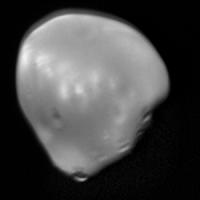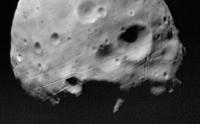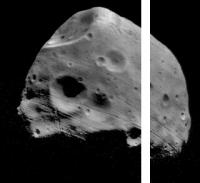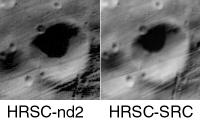Printable Version of Topic
Click here to view this topic in its original format
Unmanned Spaceflight.com _ Mars Express & Beagle 2 _ Data Discolsure
Posted by: djellison Jan 16 2005, 01:02 AM
I've emailed David Southwood. I'm not happy with the second-hand info I've heard about the HSRC re it's SRC on MEX ( wow - acronym heaven)
This is what I wrote...
First of all – congratulations to all on the success of Huygens – some spectacular imagery and data to follow – something for all of Europe to be proud of. Who would have thought 20 years ago – that the first instrument to touch titan would come from Milton Keynes!
However – I email you to ask as to there status and whereabouts of High Resolution imagery from the HSRC on Mars Express. Almost a year of orbital operations – and yet not a single released image at the ~2m resolution capability of the HSRC – and not just that – but no explanation as to why there is no imagery! The rest of the cameras abilities have been published in some astonishing imagery that really does show Mars in a whole new way – it’s fantastic. But someone, I cant help feeling that us tax-paying Europeans are missing out on some information here – and doubly frustrating, missing out on WHY we’re missing out.
Whilst, obviously, NASA and JPL are much more experienced with such things – MOC aboard MGS has released of all imagery in 6 month batches, at 6 month intervals – and I cant help feel that Mars Express should be operating a similar routine – or at least explain what plans there are to do so.
Courtesy of a specialist reporter who attended a conference in the USA recently – I’ve heard suggestion that there are calibration problems with the SRC – and that scientific data from the HSRC will be released fairly shortly – but, to be brutally honest, third hand information that may or may not be accurate just isn’t good enough – and if ESA is to stand on the world stage proudly with data in hand saying “look – look at what we’ve done, what we’ve achieved, what we’re able to do – as well as anyone in the world” – then we need to have a level of disclosure much much greater than we have now – or the image of ESA as a whole will, to some extent, move away from that of an equal to NASA ( which is something it should be able to do )
I am hugely proud of Europe’s achievements in space - I see American success and, whereas not so long ago one would thing “wow – I wish we could do that” – now I can say “yes – we CAN do that” – a paradigm shift that has occurred perhaps only in the last 18 months or so – started with MEX, and exploded with Huygens – but there must be transparency and disclosure to keep this pattern on going.
If I get a response - then I'll let you all know. The address I used was david.southwood@esa.int - as that's what I found by googling for D.S.
Doug
Posted by: krrr Feb 7 2005, 06:31 PM
According to http://www.isprs.org/istanbul2004/comm4/papers/546.pdf from April 2004, the SRC performance is somewhat disappointing. Only about twice the effective resolution of HRSC, for reasons unknown at that time.
ESA has published one SRC picture of http://www.esa.int/SPECIALS/Mars_Express/SEM21TVJD1E_1.html#subhead1.
Apparently, the first http://www.rssd.esa.int/index.php?project=PSA&page=MarsExpress#products is now available.
Posted by: BruceMoomaw Mar 5 2005, 06:37 AM
More on the subject from the upcoming European Geophysical Union conference ( http://www.cosis.net/abstracts/EGU05/06377/EGU05-J-06377.pdf ):
"Using a digital image matcher as a tool for position measurement of features in the images, we estimate that the magnification factor of SRC with respect to HRSC is 4.33, corresponding to an SRC effective focal length of 974.5 mm. This value is in good agreement with the nominal focal length, but 1.5% lower than the value that has been directly measured on the ground. However, the effective visibility of details in the SRC images is somewhat reduced over what one would expect: The
Mars Express mission constraints called for a low mass and low power instrument.
These requirements resulted in an instrument design relying on thermally balanced
conditions. In cases, where the thermal balance cannot be reached, imaging artifacts, such as blurring and 'ghosts' have been observed. Camera models and image processing algorithms are currently being studied and tested to remove these artifacts.
"By the time of writing (January, 2005) SRC has acquired more than 1500 frames, in which the camera has very often captured fascinating details in surface morphology. The SRC has proven to be very useful for statistics of small craters and for astrometric observations of Phobos. The poster will give an update on SRC performance results reported earlier and will show more examples of recently obtained data."
In short, as I figured, the SRC is out of focus for thermal reasons -- and apparently this did not come as a complete shock to the investigators. We will, I suppose, find out whether they can successfully deconvolve the blurred images.
Posted by: djellison Mar 5 2005, 11:53 AM
We're still waiting to see ANY of those 1500 frames on the ESA Website apart from that one, I believe of Phobos. ESA has much to learn to be honest. I never got a response from Southwood ![]()
Anyone know of the schedule for PDS releases of the Data?
Doug
Posted by: babakm Mar 22 2005, 10:02 PM
Anyone know of the schedule for PDS releases of the Data?
Doug
It's right on the page that you linked before. A slightly convoluted interface, but I managed to download a number of full (?) resolution images. The login is free to all.
http://www.rssd.esa.int/index.php?project=PSA
Posted by: spaceffm Mar 29 2005, 11:33 PM
@djellison
Great inniative of You.
I am very sad about ESA's PR-Work, no proper Gallerys, not many publications and no Informations.
ESA was able to make out the great event of landing the huygens probe on titan a boring coffee hour.
It would have been very important to contact all media , to perform a great show and send datas and videos to alle TV stations around earth.
But none of it happened.
In Germany the event was broadcastet in the end of the news as " well here have some not so important news..."
Very bad.
I am dissapointed by ESA very much, on the other hand i am very happy that NASA is making such a good PR-Work.
Posted by: tedstryk Apr 12 2005, 06:39 PM
"Using a digital image matcher as a tool for position measurement of features in the images, we estimate that the magnification factor of SRC with respect to HRSC is 4.33, corresponding to an SRC effective focal length of 974.5 mm. This value is in good agreement with the nominal focal length, but 1.5% lower than the value that has been directly measured on the ground. However, the effective visibility of details in the SRC images is somewhat reduced over what one would expect: The
Mars Express mission constraints called for a low mass and low power instrument.
These requirements resulted in an instrument design relying on thermally balanced
conditions. In cases, where the thermal balance cannot be reached, imaging artifacts, such as blurring and 'ghosts' have been observed. Camera models and image processing algorithms are currently being studied and tested to remove these artifacts.
"By the time of writing (January, 2005) SRC has acquired more than 1500 frames, in which the camera has very often captured fascinating details in surface morphology. The SRC has proven to be very useful for statistics of small craters and for astrometric observations of Phobos. The poster will give an update on SRC performance results reported earlier and will show more examples of recently obtained data."
In short, as I figured, the SRC is out of focus for thermal reasons -- and apparently this did not come as a complete shock to the investigators. We will, I suppose, find out whether they can successfully deconvolve the blurred images.
This sounds like the Deep Impact HRI!
Posted by: jaywee Nov 18 2005, 05:02 PM
Greetings,
just spotted 2nd release of HSRC data on PDS http://pds-geosciences.wustl.edu/geodata/mex-m-hrsc-3-rdr-v2/
It's the same data which was available on ESA Browser since July, but it's much easier to download.
Also, ESA recently added map-based interface for data retrieval on their archive http://www.rssd.esa.int/index.php?project=PSA&page=MarsExpress
jv
Posted by: Phil Stooke Nov 18 2005, 08:50 PM
... and to prove it, here's a recent image of Deimos from the SRC of HRSC. This is the Mars-facing end seen from a bit south of the equator.
Phil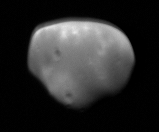
Posted by: Phil Stooke Nov 18 2005, 09:00 PM
And another... further north and west.
Phil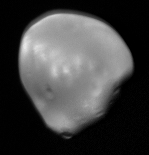
Posted by: Phil Stooke Nov 18 2005, 09:31 PM
This is a Deimos 'super-resolution' composite (in the sense Ted and I, and others, have used the term... a composite of more than one images, each enlarged and sharpened) from the SRC images on MEX orbit 973. Each crater is accompanied by a 'shadow' above it - not a real shadow, but looking more like a double exposure. This was NOT caused by misregistration in my composite. It's visible in each raw image. It must be related to the issue which is reducing the effective resolution of the SRC images.
Phil
Posted by: Bob Shaw Nov 19 2005, 01:10 AM
Phil:
Perhaps this explains the global paucity of data - all that had previously escaped was highly processed into faux 3-D and similar eye candy.
Oh, bottoms!
Bob Shaw
Posted by: Phil Stooke Nov 19 2005, 04:35 AM
Everything's bottoms, isn't it, Bob!
Phil
Posted by: Phil Stooke Dec 13 2005, 11:29 PM
Hre's a recent Mars Express image from the recent data release.
It's Phobos seen by the SRC. Lots of grooves.
I'm getting the hang of the system now. I go into ESA's PSA, search on (in this case) Phobos - or could do a lat-long search on Mars for images of a specific feature. That gives me a list of images. Then I go to PDS, look for the image in their browse directories to confirm it, then to the data directories to find the full image, and download it.
You could search for the header elsewhere but an easy approach is to open the file in Word or a similar word processor. It lets you read the header. Then open the image as raw in Photoshop or equivalent. They are 16 bit.
Phil
Posted by: elakdawalla Dec 13 2005, 11:32 PM
It's Phobos seen by the SRC. Lots of grooves.
Wow, that's a cool picture. Phil (or anybody else with as crazy an amount of knowledge as Phil), have we seen Phobos at this longitude in any previous image from any spacecraft? I don't remember a view anything like this. Is there another adjacent tile in there that one could make a mosaic from?
Also, to anyone's knowledge, has any picture from the SRC ever been released to the public/press?
And, for this picture in specific: would it be a valuable activity to try any of those focus-correcting or deconvolution tools on these blurry SRC images?
--Emily
Posted by: Phil Stooke Dec 14 2005, 04:12 AM
We're looking at the north pole. Stickney is off the top. Roche, very near the north pole, is deep in shadow at bottom. There are three SRC images from this orbit spread left to right, but giving no new coverage. The HRSC image which matches this has a data gap but does show the full disk (except that gap) including Stickney at lower resolution. I'll post it tomorrow. There are Viking images of this general area, and the previously released Phobos images from Mars Express (a release early this year, if I recall) also overlap it a lot.
The only publicly released SRC image I can think of is one of those from the earlier Phobos set. My Deimos images (above in this thread) show that SRC has a slight double exposure-type defect. In this Phobos image it seems to add to the perception of there being a zillion grooves.
Phil
Posted by: BruceMoomaw Dec 14 2005, 04:56 AM
The HRSC scientists are still reluctant to talk about the SRC, but one photo of a dust devil taken by it was shown at the AGU. The resolution was still listed as 5 meters/pixel, implying that they haven't been able to correct the focusing problem.
Posted by: mcaplinger Dec 14 2005, 05:24 AM
Despite what's been said in other discussions in this forum, you need knowledge of a system's point-spread function to do deconvolution. Anything you do without knowledge of the PSF is just regular high-pass filtering, and you can do that with Photoshop perfectly well.
Posted by: tedstryk Dec 14 2005, 10:32 AM
If you can find images of point sources from a camera, you can reconstruct the PSF.
Posted by: Phil Stooke Dec 14 2005, 02:49 PM
Here's the HRSC image of Phobos from MEX orbit 1163 to match the SRC image above. I want to emphasize that there is a (minimal) improvement in resolution going from HRSC to SRC, even with the flaw. See my next post.
Stickney is at the top. The north pole is at the bottom near the terminator. And this is a left-right mirror image. I didn't correct it because it's important to illustrate the fact that the raw images can be flipped in that way.
Phil
Posted by: Phil Stooke Dec 14 2005, 03:09 PM
I said there was an increase in resolution, and thought I'd make a direct comparison image to prove it. The results were not promising so I edited my comment above! Here's the comparison:
The HRSC-nd2 image is a 100 by 100 pixel detail from the previous post, enlarged two times. The SRC image was cropped to match this and had to be shrunk slightly to match the scale, but that is not making any significant difference to the resolution because it is already degraded. The double exposure (or jitter) effect is visible on every sharp edge here. Here the nd2 image is flipped to match SRC and the view you would see.
If you just sharpen the SRC image you are sharpening the double exposure! That won't help. A custom-written routine to subtract the ghost image might be possible, but such things are never perfect.
Phil
Posted by: mcaplinger Dec 14 2005, 04:05 PM
Certainly. In fact, I might say that this is the only way to reliably determine the PSF, though it's complicated by the fact that you are limited by the sampling frequency of the system's detector and you would usually not oversample the PSF as much as you'd like to if you were just trying to measure the PSF, not take useful images.
However, I haven't seen anyone on this forum going through the PSF determination process, and without doing that, you can't do deconvolution, you can only do filtering.
Just a pedantic nitpick, perhaps, but I think it's important to be precise about these things.
Posted by: BruceMoomaw Dec 15 2005, 01:12 AM
One possible additional problem: since SRC's focusing problem seems to be due to the fact that they can't adequately regulate the camera's temperature, the degree of defocusing may keep changing, making reliable deconvolution almost impossible. (ESA has implied that they knew this was a risk when they decided to add the lightweight SRC to Mars Express' payload at the last minute.)
Posted by: edstrick Dec 15 2005, 10:28 AM
mcaplinger: "Just a pedantic nitpick, perhaps, but I think it's important to be precise about these things."
Anyway, it's fun for us pedantic nitpickers to beat the plebians over the head with our leaden erudition!
Posted by: Phil Stooke Dec 15 2005, 02:23 PM
edstrick said:
"Anyway, it's fun for us pedantic nitpickers to beat the plebians over the head with our leaden erudition!"
Yes, and it makes the beatees feel superior too, though in a slightly different way...
Phil
Posted by: lyford Dec 15 2005, 05:35 PM
Eschew Obfuscation!
Posted by: Phil Stooke Dec 15 2005, 05:46 PM
Done!
Phil
Posted by: Phil Stooke Dec 15 2005, 05:50 PM
I've just noticed that I made a mistake in my Phobos postings. To clarify, the SRC image is from MEX orbit 1163, but the HRSC-nd2 image is from orbit 1212. If I recall, the SRC missed Phobos on the later orbit.
Phil
Powered by Invision Power Board (http://www.invisionboard.com)
© Invision Power Services (http://www.invisionpower.com)

